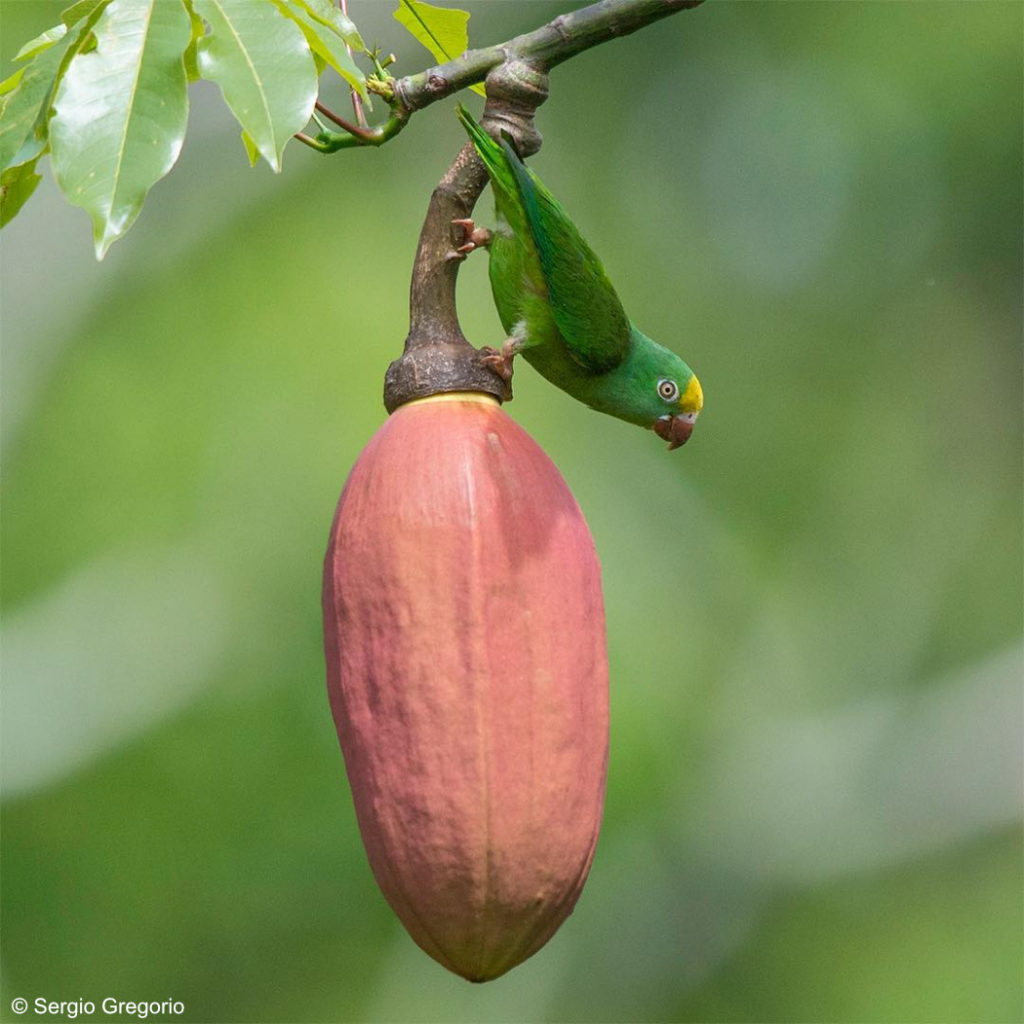Brotogeris sanctithomae - Tui Parakeet
Photo: Copyright © by Sergio Gregorio via Instagram @sergiogregoriophoto
Tui Parakeet – Brotogeris sanctithomae (Statius Müller, PL, 1776) – is a small green parrot native to Amazonia in South America.
They are social and usually gather in small groups, sometimes also in large flocks especially near water or where there is plenty of food.
Previously the Tui Parakeet was fairly common in aviculture; during the late 1960s to 1970s they were frequently imported in large numbers into USA – however, there was little interest in breeding. Due to an export ban they are now rare in aviculture.
The average lifespan is 15 years but some have been recorded to live up to 35 years.
Plain Parakeet is listed on CITES Appendix II and EU Annex B.
Description
Overall yellowish-green plumage with darker green on wings. Yellow forehead, lores and forecrown. Eye ring is pale grey and bare. Eyes are yellow. The bill is dark orange/brown. The tail is relatively short and wedge-shaped.
Juveniles are similar to adults but dark grey eyes and a darker brown bill.
Size: 17 cm
Weight: 58 g
Subspecies
Two subspecies are recognized:
- Brotogeris sanctithomae sanctithomae (Statius Müller, PL, 1776) :
Nominate subspecies, colours as described above. Its habitat is in western Amazonia.
- Brotogeris sanctithomae takatsukasae (Neumann, 1931) :
Known as Santarém Tui Parakeet. Similar to nominate subspecies but smaller (about 16 cm) with a yellow stripe or spot from the eye to the ear coverts. Its habitat is in the lower Amazon basin of north-central Brazil.
Habitat
The Tui Parakeet is native to the Amazonia in South America; its range includes south-eastern Columbia through Amazonia in Brazil to south-eastern Peru and north-eastern Bolivia.
They are found in lowland tropical rainforest up to 300m (984 ft); they are usually found in várzea forests on banks and islets of rivers or clearings near water.
Diet
In the wild the diet mainly consist of fruit but also Erythrina flowers, seeds, insects and their larvae, minerals and grit. They also visit manioc and sugar cane fields.
In captivity fruit should make up about 30% of the diet. Supplement with vegetables and a high quality seed mix with small seeds like canary, millet, buckwheat, safflower hemp and oats. Sunflower sprouts are also recommended.
Aviculture
Breeding season is May – Juli.
The aviary should be at least 2 m long. Provide a water bowl or similar as they love to bath.
The nest box should be about 20 x 20 x 60 cm; use either a tree stump or vertical box.
The clutch contains 4-5 eggs, that are incubated for ~24 days. The chicks reach fledging age after ~45 days.
Taxonomy
- Order: Psittaciformes
- Family: Psittacidae
- Genus: Brotogeris
Synonyms
- Danish: Tuiparakit, Santarém Tuiparakit
- English: Tui Parakeet, Golden-headed Parakeet, Santarém Tui Parakeet, Santarém Parakeet
- French: Perruche toui, Perruche tui, Toui à front d’or, Toui à front d’or
- German: Tuisittich
- Portuguese: Estrelinha, Estrelinha-do-pará, Periquito-brasileiro, Periquito-de-testa-amarela, Periquito-estrela, Periquito-testinha, Tuim, Tuipara-estrelinha
- Spanish: Catita Frentigualda, Periquito Cabeciamarillo, Periquito Pálido
- Scientific: Brotogeris sanctithomae
IUCN Red List

BirdLife International 2016. Brotogeris sanctithomae. The IUCN Red List of Threatened Species 2016: e.T22685994A93095525.
https://dx.doi.org/10.2305/IUCN.UK.2016-3.RLTS.T22685994A93095525.en
Downloaded on 9 July 2021
